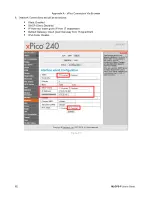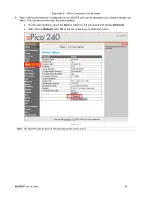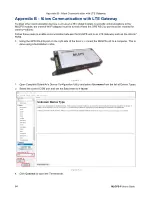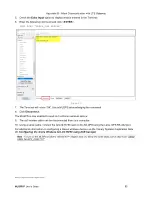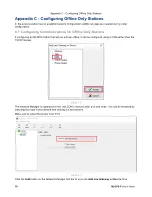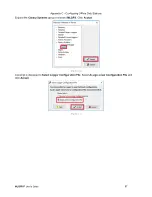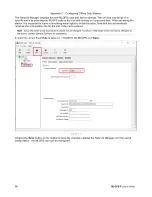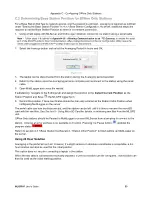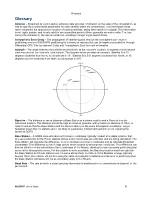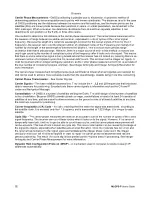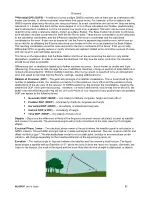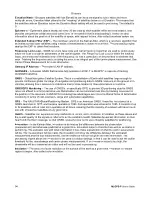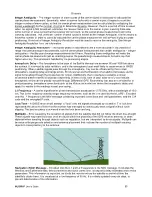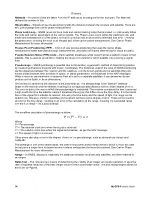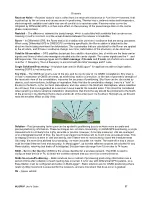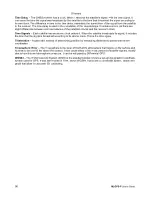
Glossary
96
MLGPS-P
User's Guide
Netmask
‒ A number of bits are taken from the IP address to be assigned for the host part. The Netmask
defines this number of bits.
Observables
‒ Signals whose measurement yields the distance between the receiver and satellite. There are
two:
pseudorange
and
carrier phase measurement
.
Phase Lock Loop
‒ GNSS receivers have code and carrier tracking loops that are used to continuously follow
the code and carrier parameters of the carrier signals. The
Phase Lock Loop
is within the tracking loops, and
tracks and estimates error of the phase, so that a correction can be provided to eliminate that error. Tracking
the phase and correcting the error is an integral part of the carrier phase measurement. See Carrier Phase
Measurement for more information.
Precise Point Positioning
(
PPP
) ‒ A form of very precise positioning that uses the carrier phase
measurement rather than pseudorange measurements, and does not require differencing for equal accuracy.
Pseudo Random Noise
(
PRN
)
Code
‒ Each satellite broadcasts white noise that has a pattern unique to that
satellite. This is used as an identifier, helping the receiver to determine which satellite it is receiving a signal
from.
Pseudorange
‒ GNSS positioning is possible due to
trilateration
, a geometric method of determining position
by measuring distances to points with known coordinates. The distances used in the case of GNSS positioning
are the distances between the receiver and the satellites, and the known points are the satellites (they are
known points because their positions in space, or orbital parameters, are broadcast in the NAV message).
When a receiver can determine its distance from at least four separate satellites, it can determine its own
position on the Earth, in three dimensions.
One method to determine this distance is the
pseudorange
. The pseudorange is the "pseudo" distance
between the receiver and the satellite, meaning it is an approximated distance with a certain degree of error.
This error is due to the way in which the pseudorange is calculated: The receiver compares the time it received
a signal with the time the satellite claims it broadcast the signal, this difference is the
time delay
. It is the transit
time of the signal from satellite to receiver. Knowing the time delay and the speed of light, the range can be
determined. However, clocks in satellites and receivers will have some degree of error. These errors result in
an error in the time delay, resulting in an error in the calculation of the range, meaning the calculated range
isn't the true range ‒ it's a pseudorange.
The simplified calculation of pseudorange is below:
P
= (
T
R
‒
T
S
) x
c
Where:
P
= Pseudorange
T
R
= The receiver clock time when the signal is received
T
S
= The satellite clock time when the signal as broadcast, as per the NAV message
c
= The speed of light in a vacuum
Other errors also play a role in the degree of error in the pseudorange, such as atmospheric delays and
multipath.
Pseudorange is one of two observables, the other being
carrier phase measurement
, which is more accurate
but requires a longer time to determine and contains ambiguities that must be resolved. See Carrier Phase
Measurement for more information.
Range
‒ In GNSS, distances, especially the distances between receivers and satellites, are often referred to
as
ranges
.
Ratio-Test
‒ The
ratio-test
is a means of determining the validity of an integer ambiguity resolution. It uses the
ratio of squared residuals of the best integer vector to the second-best vector. The processing engine allows for
this to be configured.

